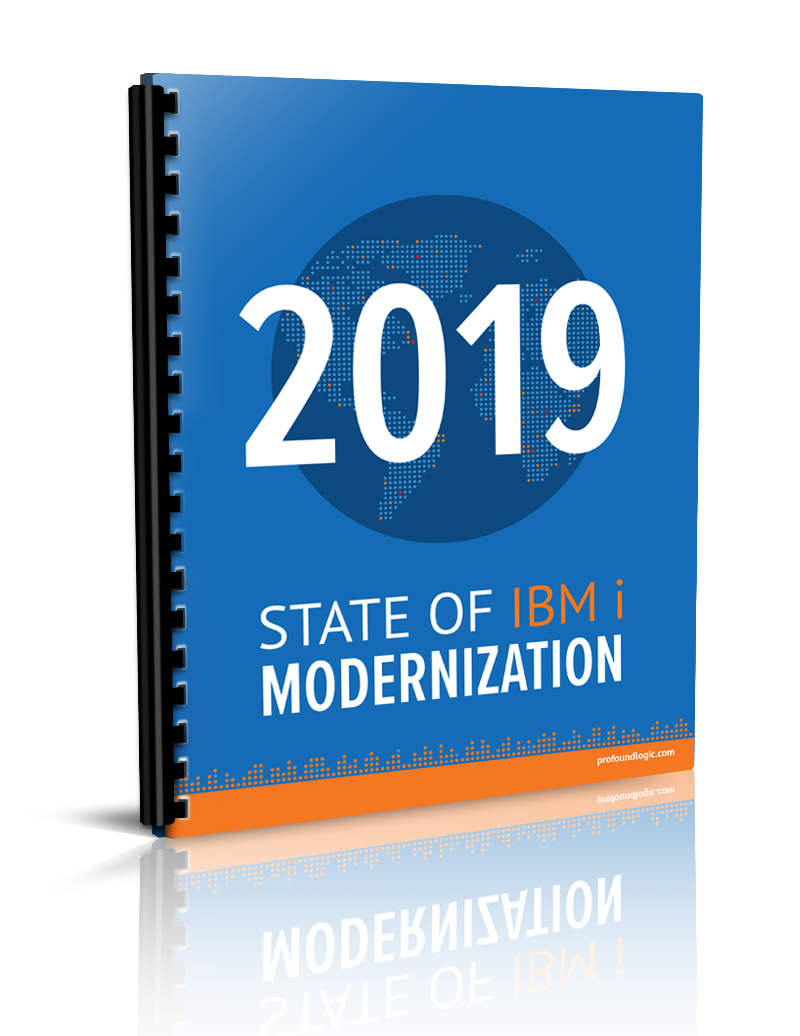
The term 'Modernization' is thrown around a lot lately in industries like transportation, medicine, and most notably in technology. Many companies fear change because it brings with it a sense of discomfort and uncertainty, and the term 'Modernization' can represent large scale change when it comes to application modernization. This means that convincing management to buy into these changes can be tricky and complicated. Many developers struggle to develop a successful business case to help sell their 'Modernization' plans. The plans that do succeed are the ones that focus on critical business capabilities on multiple levels.
Here are four areas to focus on when building your 'Modernization' business case.
1. Stating the Problem
When presenting your 'Modernization' business case, you will be tempted to get into the intricate complexity of how this effort will impact not only your team but the company as a whole. There are plenty of data/case studies/white papers for you to present to the decision-makers of your company. That might be a mistake. Many business decision-makers are usually not technical and instead are looking for easy to understand and concise explanations. Your business case must address concerns that you have, but also the concerns that the company has as a whole. How will this 'Modernization' effort help better the company? Simply put, don't over complicate it, state the problems that the company is having and how this will address and solve those problems.
2. Road Map to Success
One of the most significant hurdles for any form of modernization is the cost that is involved. Getting over this hurdle can significantly increase your chances of getting your modernization effort started. When presenting your business case, draw a direct transition from where the business is currently and where you believe the modernization effort will take the company. Give examples of how it will positively affect different departments as well as how it will affect the company as a whole. Discuss how your current business processes are failing and how an application modernization effort can improve those processes over the intervening years. Other topics you might discuss are the effects it will have on evolving your development cycles, revenue saved, or gained over intervening years and the increased productivity of employees.
3. Detail Your Project
If you don't make your business case clear and concise, you have lost before you even began. Make sure the description of your modernization project is clear to your decision-makers. One of the biggest mistakes you can make when pushing for a modernization project is asking for every single application to be modernized immediately. That sounds like a lot of time, effort, and money to decision-makers. Even if that is your end goal, give them a prioritized and multi-staged outline that details which applications need modernizing first. Also think about including the number and types of applications, as well as the number of resources required to complete the modernization effort. Giving a detailed project plan that has multiple steps provides decision-makers the ability to easily see the long-term plans for modernization instead of fearing a quick and radical change.
4. Analyze the Cost
The ultimate question is going to be, "How much does it cost?" You may not be able to give your decision-makers a clear answer to that, but you can give them a cost-benefit analysis that is rooted in business value to help them see why this is so vital. You need to clearly define the impact on the business and use relevant business metrics to help you make your case. But this doesn't stop at presenting your business case. You must continue to monitor and report these metrics throughout the modernization process. So many modernization efforts have fallen short due to lack of information given to the decision-makers during the process. Another way to view this is to provide them with the "do nothing" option, demonstrate the correlation between doing nothing and the technical shortcomings that hinder the growth of the business.
Some other noteworthy tips to helping you achieve your 'Modernization' effort are:
Create a business-led analysis of all IT assets to help focus on the applications that need modernization the most. This is a great starting point for decision-makers to get on board.
Structure your business case to showcase the division of work into smaller waves of migration over the years... not months. Nothing scares a CEO more than massive and quick change.
Design a continuous modernization program that helps ensure all applications that are modernized stay current for technology and business needs. This will show them that this modernization effort can be a one-time effort instead of a need every 10-15 year.




